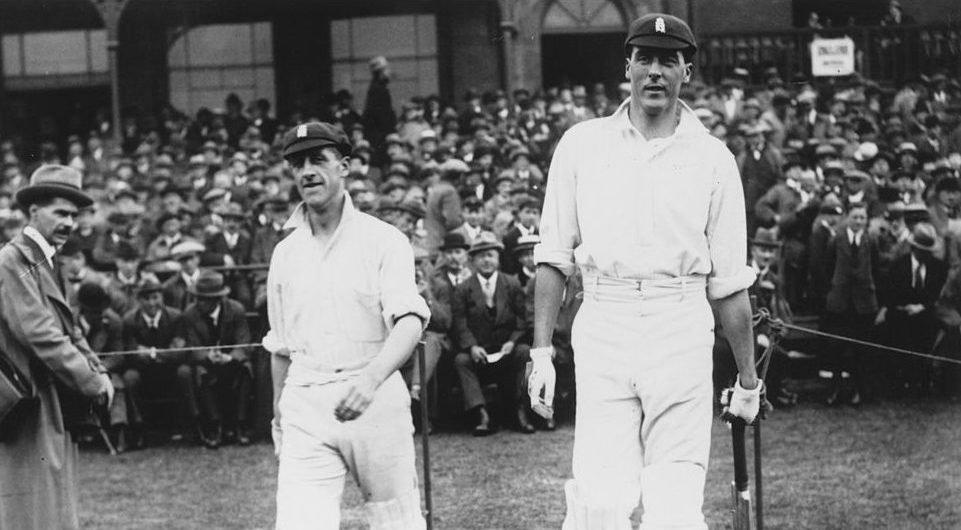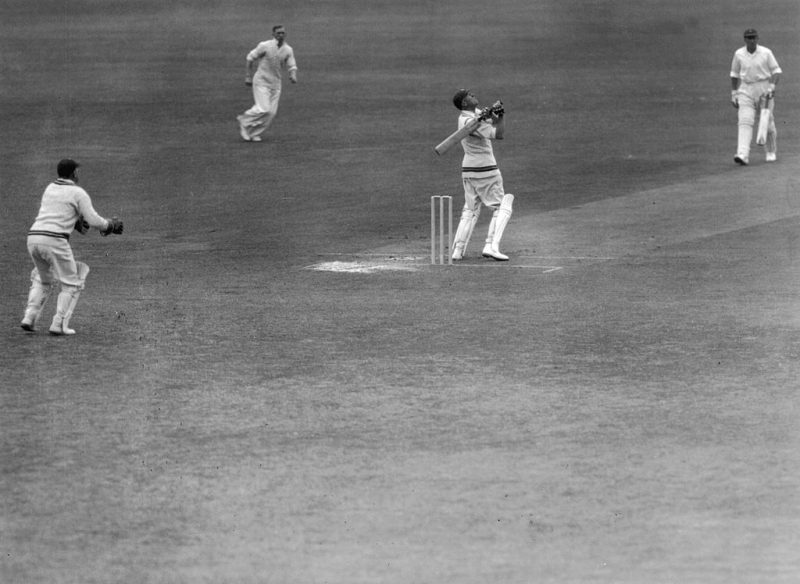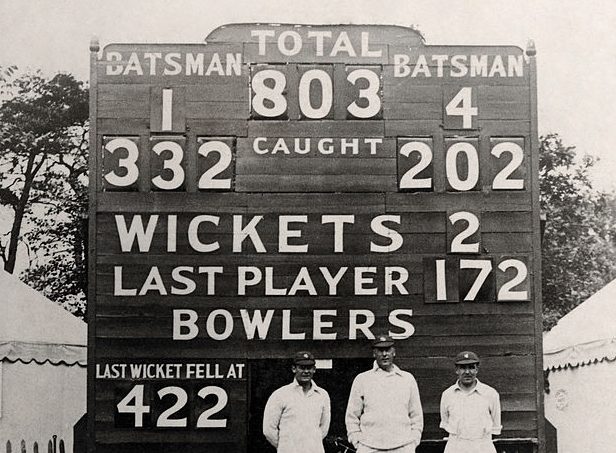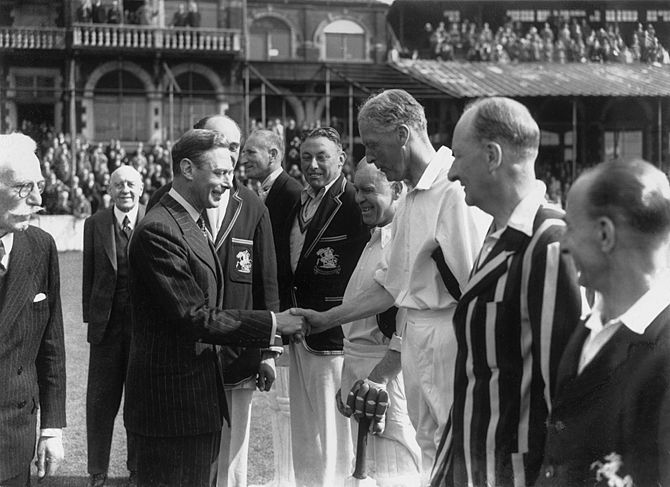Frank Woolley: One of the most elegant left-handers of all time – Almanack

Frank Woolley, one of the greatest of all English batsmen, died in October 1978. In the following year’s Wisden Almanack, editor Norman Preston paid tribute.
Frank Woolley was beyond doubt one of the finest and most elegant left-handed all-rounders of all time. In a first-class career extending from 1906 to 1938 he hit 58,969 runs – a total exceeded only by Sir Jack Hobbs – including 145 centuries, to average 40.75; he took 2,068 wickets for 19.85 runs each, and he held 1,015 catches, mainly at slip, a record which remains unsurpassed.
Even more impressive than the number of runs Woolley amassed was the manner in which he made them. Standing well over six feet, he was a joy to watch. He played an eminently straight bat, employed his long reach to full advantage, and used his feet in a manner nowadays rarely seen. His timing of the ball approached perfection and he generally dealt surely with all types of bowling. Master of all the strokes, he was at his best driving, cutting, and turning the ball off his legs. He was described by Sydney Pardon as the cleanest driver since FGJ Ford, but he often started badly and there was something wanting in his defence. As a bowler he made good use of his height and bowled with a graceful easy swing.

Frank Woolley in action
As a small boy he was always to be found on the Tonbridge Cricket Ground, and his natural ability as batsman and bowler attracted so much attention that, in 1903, he was engaged to take part in the morning practice and play in a match or two in the afternoon if required. In the following year he became a regular member of the Tonbridge groundstaff, which in those days was the official Kent nursery.
When given his first chance in the Kent XI in 1906, he was almost unknown to the public, and his all-round form in his third match, against Surrey at The Oval, came as nothing less than a revelation. To begin with, he took three Surrey wickets, clean bowling Hayward, Hayes and Goatly. He then made 72, and when Surrey batted again he took five wickets for 80 runs. Finally, he scored 23 not out, helping to win a wonderful game for Kent by one wicket. The match established his reputation.
When Frank Woolley announced his retirement in 1938, I spent an afternoon with him at his home in Hildenborough where he talked about “My happy cricket life”. In his first season with Kent they won the County Championship for the first time, and altogether between 1906 and 1913 they were top four times. Now let Woolley speak for himself as he told his story to me.
“Those were the great days when plenty of amateurs could spare time for cricket. I do not believe there are so many good players in the game now as before the [First World] War. In the old days we were probably educated in cricket in a far more serious way than now. For the purpose of giving the younger people my idea of the difference, I will put up Walter Hammond, England’s captain, as an example.
“Before 1914 there were something like 30 players up to his standard and he would have been in the England team only if at the top of his form. I make these remarks without casting the slightest reflection on Hammond. He is a grand player and one of the greatest all-round cricketers since the War – in fact, the greatest.
“I doubt whether English cricket has really recovered from the effects of the War. You see, we missed half a generation and since then young men have found many other ways of occupying their leisure hours. Still, I believe it is only a passing phase and cricket will one day produce an abundance of great players.”
Unfortunately for cricket, within a year England was plunged into another war, and in my opinion the game in this country has only just shown signs of getting on its feet again with a stream of fine young players coming through, notably in the county of Kent. But to return to the Woolley interview as he saw the game 40 years ago.

In 1934, Kent declared on 803-4 after seven hours. Leslie Ames scored 202 and Frank Wooley 172
“There is little wrong with the game itself. Just a question of the way it is played. It is amazing how the public steadfastly refuse to attend the third day of a match when so often the last day produces the best and most exciting cricket.”
“Touching on a personal subject I have been asked if I can explain why I was dismissed so many times in the ‘nineties’. The statisticians inform me that I was out 35 times between 90 and 99 and I am also told that I am credited with 89 ducks. With regard to those ‘nineties’, I can honestly say that with me it was never a case of the ‘nervous nineties’. Lots of times I was out through forcing the game. We were never allowed to play for averages in the Kent side or take half an hour or more to get the last ten runs under normal conditions. We always had to play the game and play for the team. It is a Kent tradition.
“As a matter of fact I consider the two finest innings I ever played were in the second Test against Australia in 1921 when I was out for 95 and 93. I don’t think I ever worked harder at any match during my career to get runs as I did then, nor did I ever have to face in one game such consistently fast bowlers as the Australian pair, Gregory and McDonald. Square cuts which ordinarily would have flashed to the boundary earned only two, and I believe that those two innings would have been worth 150 apiece in a county match.
“I was not depressed when they got me out. I have always taken my dismissals as part of the game. In the first innings I was in the ‘eighties’ when I was joined by the last man, Jack Durston. It was my own fault completely that I lost my wicket. Mailey bowled me a full toss to the off; I walked down the pitch, stepping to the on to face the ball past extra cover, I missed it, and that fine wicketkeeper, H. Carter, eagerly accepted the opportunity to stump me.
“I was rather unlucky in the second innings when again I fell to Mailey. The ball stuck in his hand and dropped half-way on the leg side. I hit it pretty plumb between square leg and mid-on and just there was standing ‘Stalky’ Hendry. As I made the shot he jumped in the air and up went his right hand. The ball hit him, I think, on the wrist, and he lost his balance. The ball went up ten feet and as he was lying on the ground it fell in his lap and he caught it. He was the only man on the leg side and I think the shot would have carried for six. It was a marvellous catch.”
“It is often argued that left-handed batsmen have an advantage compared with the right-handers. I do not agree. When the turf is worn the right-hand leg-break bowlers and left-arm slow bowlers are able to pitch the ball into the footholes of the bowlers who have operated at the other end. Right-handed batsmen can let these balls hit their pads, but the left-handers must use their bats. Perhaps the new [1937] lbw rule has not helped us there, but the amended law does not worry me, though in my opinion it has not improved the game. As for further extending the lbw rule I think it would make a farce of the game.”

Frank Woolley shakes hands with King George VI during the Surrey Centenary Match, 1946
“In many quarters surprise was expressed that at the age of 51 I went in No.1. Until then I had never been in first regularly, though I had always preferred that place. Beginning as a bowler made Kent place me four or five in the order, and moreover the county were always rich in opening batsmen. Consequently my wish to start the innings was denied until 1938.
“Because Kent have experienced their bad times against fast bowling [there were very few bouncers in those days] the cry has gone round that we cannot play the fast men, but I think if you search the records you will also find that Kent have hit a tremendous lot of runs off fast bowling. Again I must emphasise that Kent always endeavour to play sporting cricket, and trying to make runs off that type of bowling must sometimes have contributed to our downfall. It was never a policy of the Kent team that the pitch must be occupied all day after winning the toss.
“I cannot let this opportunity pass without placing on record how much I have enjoyed my cricket with Kent. If I was a youngster starting as a batsman I think I should like to play always at The Oval, but the Kent grounds, with their natural decorations of beautiful trees, members’ tents flying their own colours and bedecked with flowers, lend the right tone to cricket.”
After his retirement from the field, Woolley was elected a life member of MCC and Kent, and also to the county committee. He was quite active into his late 80s and in January 1971 flew to Australia to watch the last two Tests. Nine months later, in Canada, he married for a second time, his first wife having died ten years earlier. His second bride was Mrs Martha Morse, an American widow.
Woolley, Frank Edward, died on October 18, 1978, aged 91
Read more from the Wisden Cricketers’ Almanack archive

